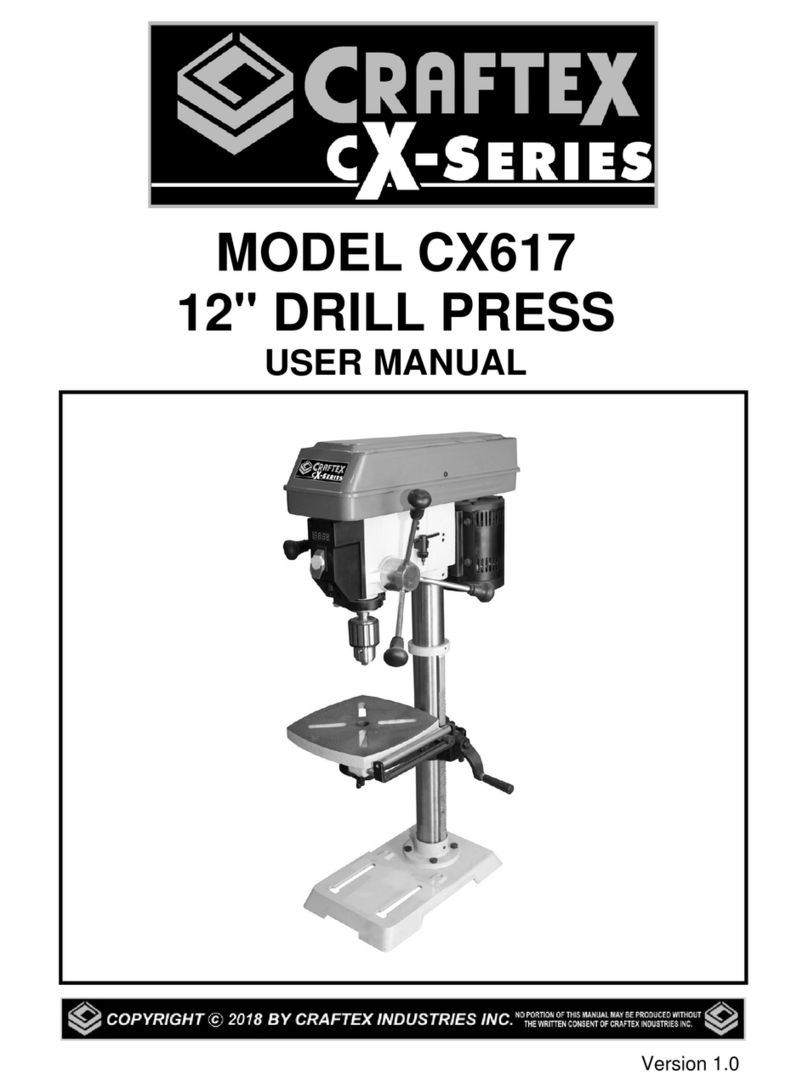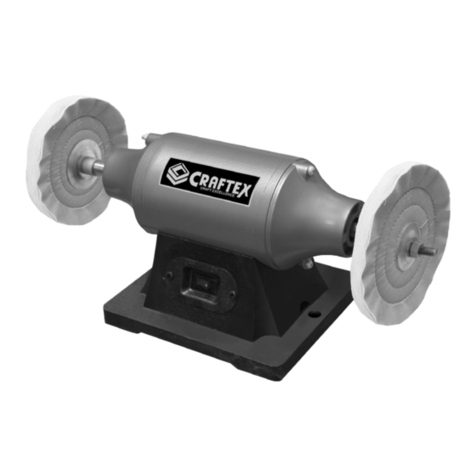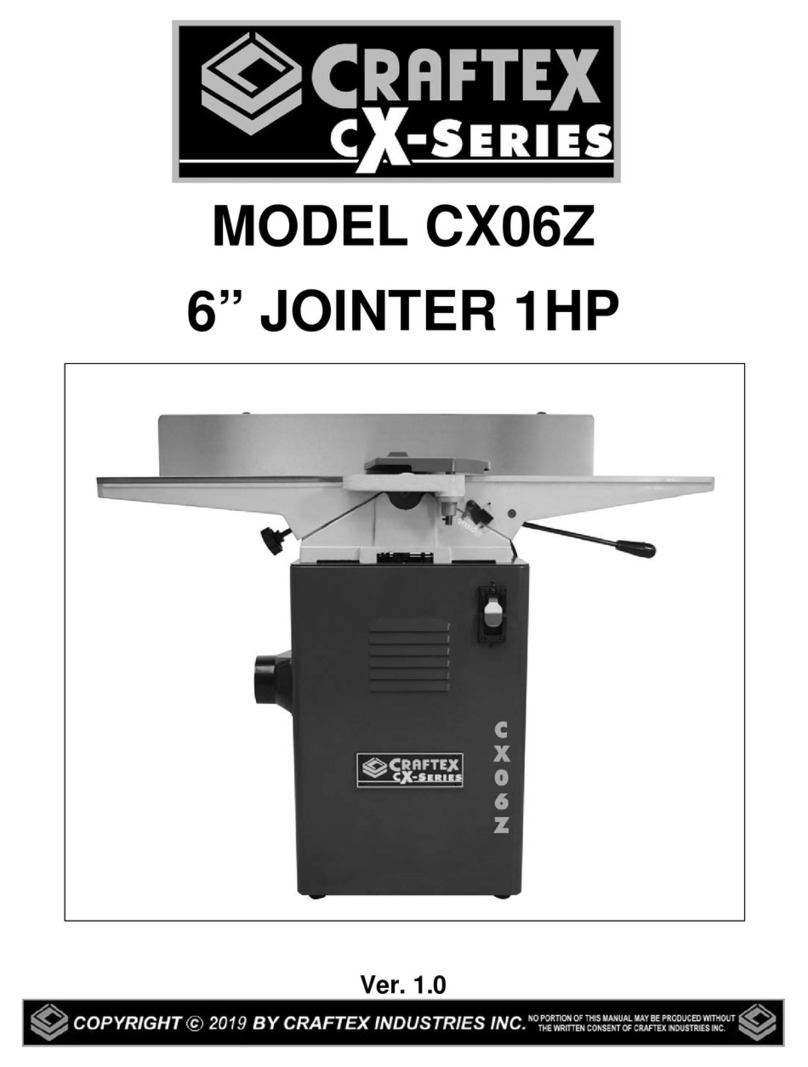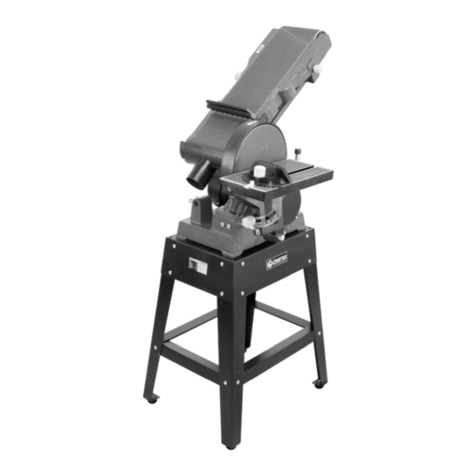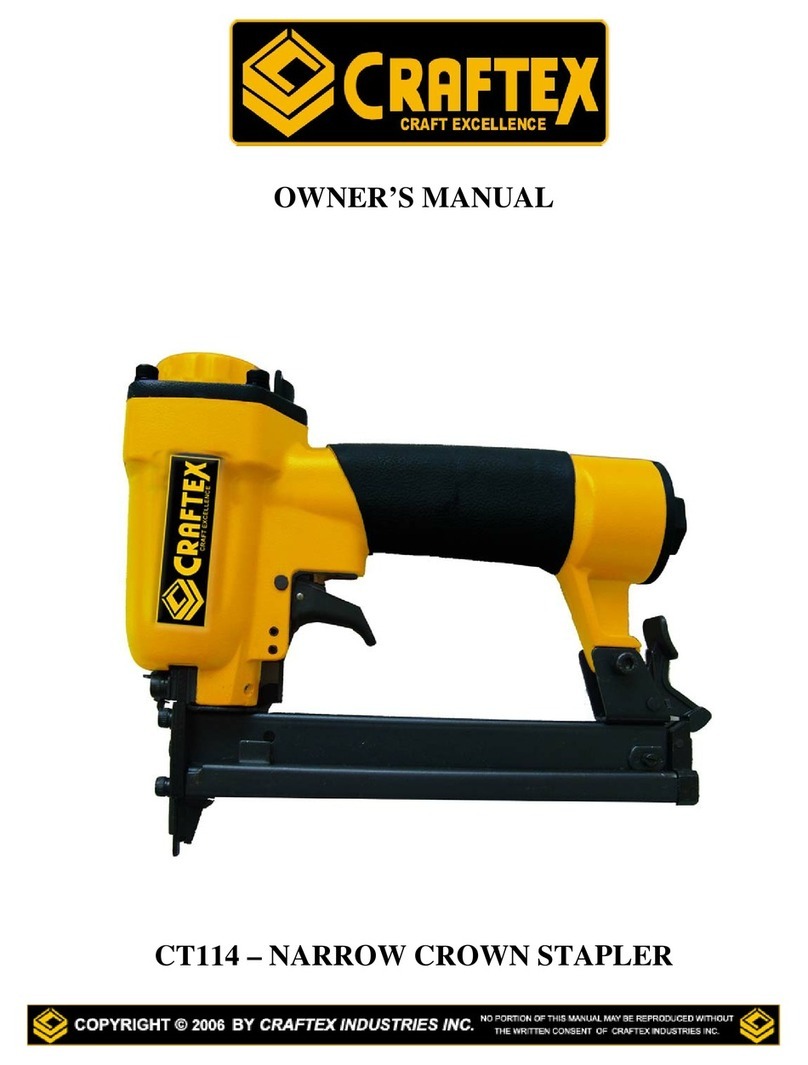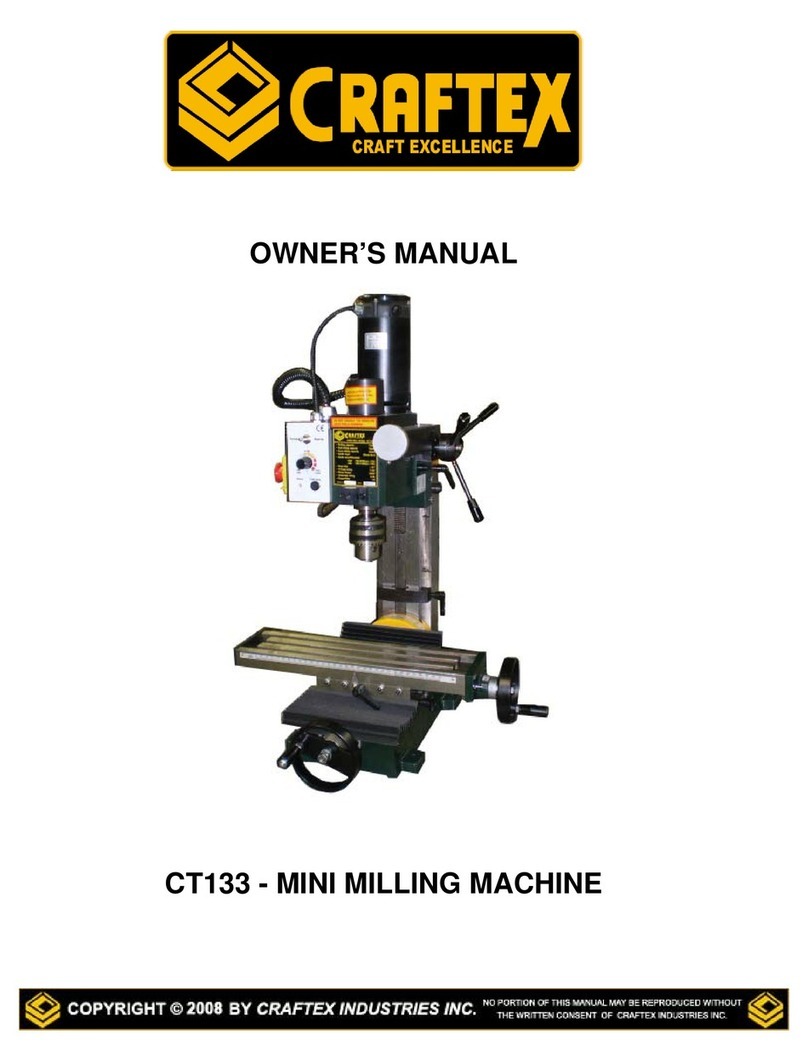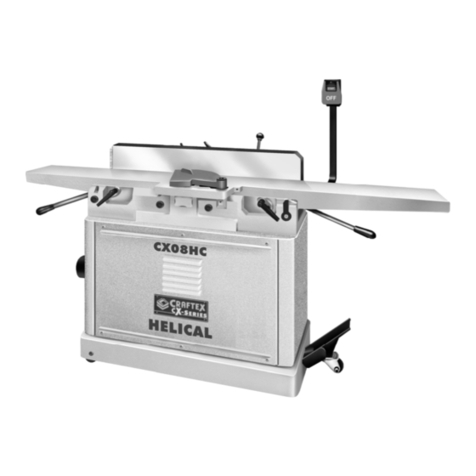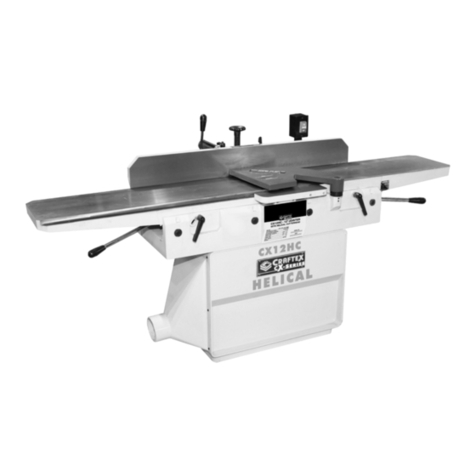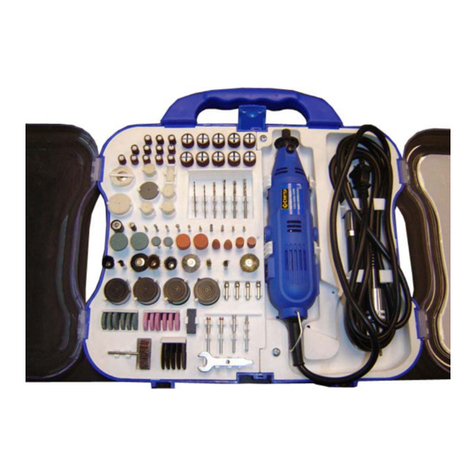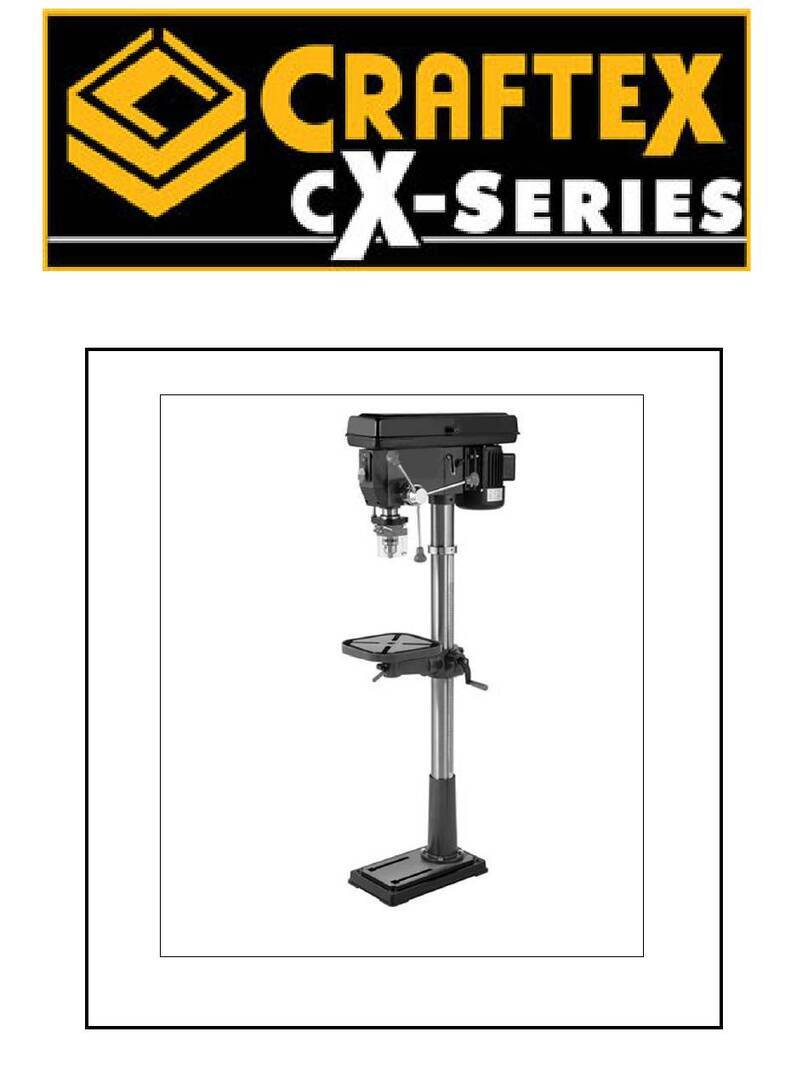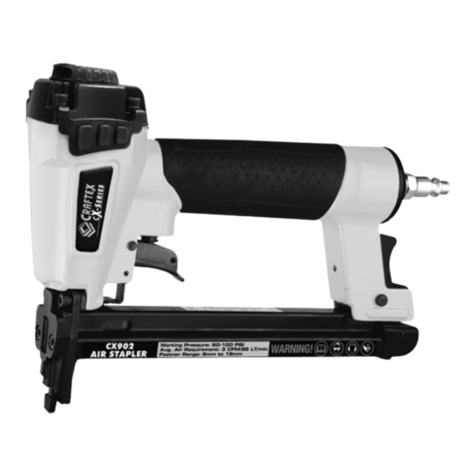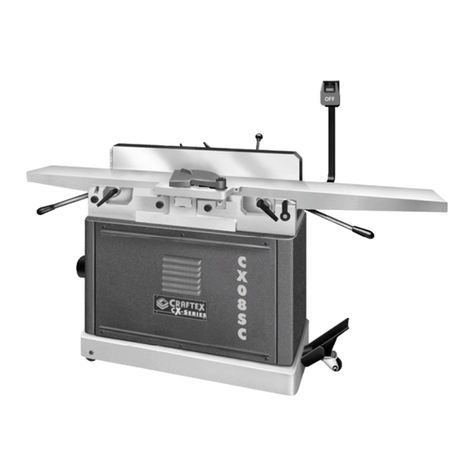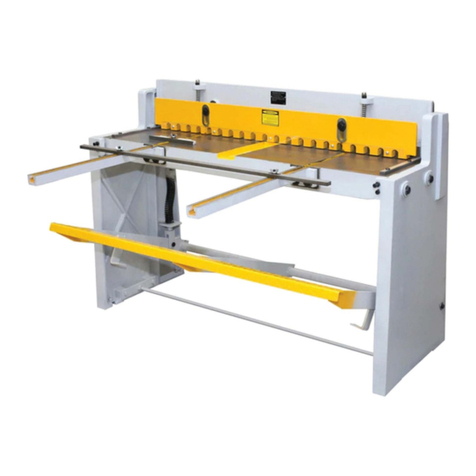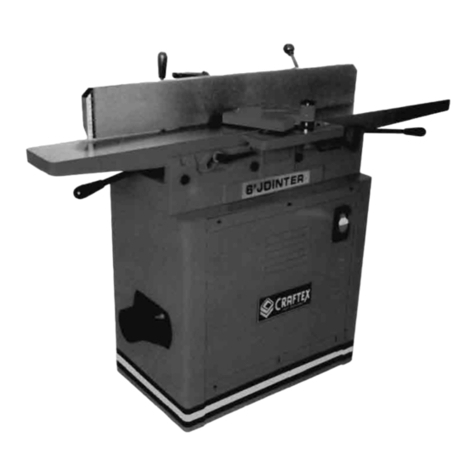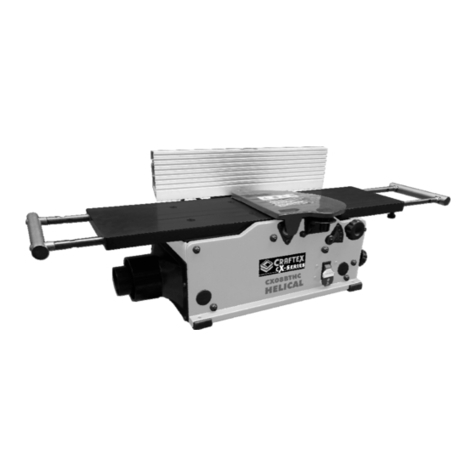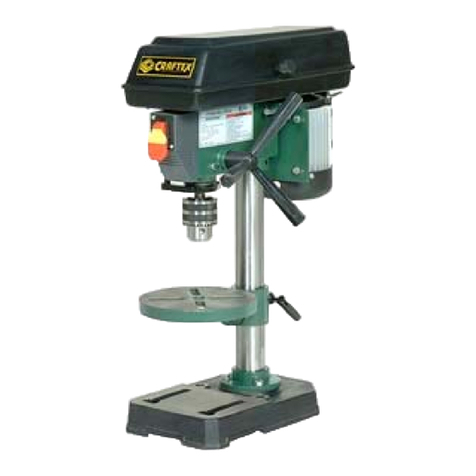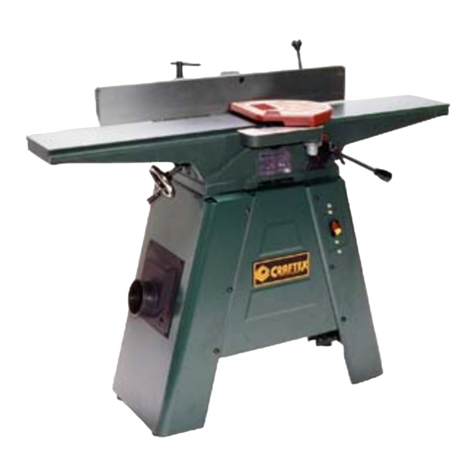
INDEX
General Safety Instructions...............................................................3
Specific Safety Instructions...............................................................4
CT200-6" Jointer Features................................................................5
CT201-8" Jointer Features................................................................6
Physical Features..............................................................................7
Proper Grounding..............................................................................8
Setup................................................................................................9
Un-packing........................................................................................9
Assembly.......................................................................................10
Mobile Base ....................................................................................10
Installing Jointer to the Stand..........................................................10
Extension Table ..............................................................................11
Fence..............................................................................................11
Tilt Knob and Fence Lock Handle...................................................12
Cutter-Head Guard..........................................................................12
Dust-Hood.......................................................................................13
Pedestal Switch...............................................................................13
V-Belt..............................................................................................13
Operations & Adjustments...........................................................14
Basic Controls.................................................................................14
Test Run .........................................................................................14
Surface Planing...............................................................................15
Edge Jointing ..................................................................................15
Bevel Cutting...................................................................................16
Inspecting the Cutter-Head.............................................................17
Adjusting / Replacing Carbide Inserts.............................................17
Table Parallelism.............................................................................18
Setting Out-Feed Table Height .......................................................19
Setting In-Feed Table Height ..........................................................19
Parts Breakdown & Lists..............................................................20
CT200 Parts Breakdown............................................................20-21
CT201 Parts Breakdown............................................................22-23
CT200-6" Parts List...............................................................24-25-26
CT201-8" Parts List..........................................................27-28-29-30
Warranty ........................................................................................31
2
